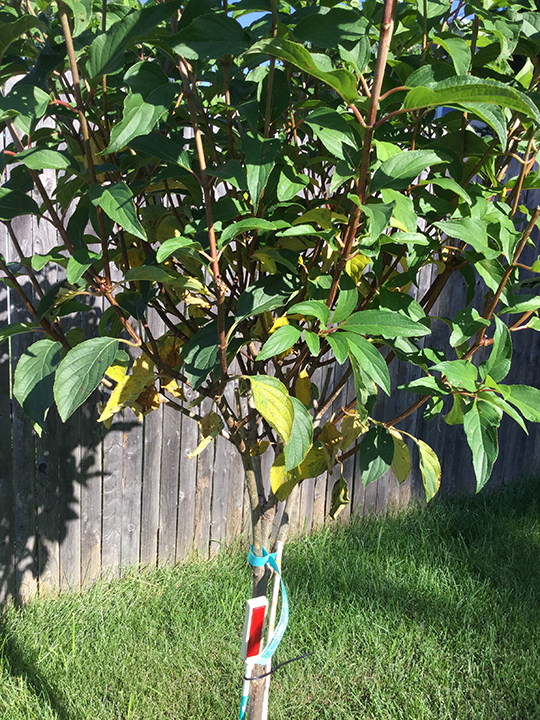Hydrangea Leaves Turning Yellow - Questions
The Single Strategy To Use For Hydrangea Leaves Turning Yellow
Table of ContentsNot known Facts About Hydrangea Leaves Turning YellowGetting The Hydrangea Leaves Turning Yellow To WorkRumored Buzz on Hydrangea Leaves Turning YellowThe 6-Second Trick For Hydrangea Leaves Turning Yellow3 Simple Techniques For Hydrangea Leaves Turning Yellow
Overwatering can likewise cause dehydration, as counterproductive and odd as that may appear. Overwatering can choke off oxygen to the roots, which your houseplant needs to make it through.Hence the plant comes to be dehydrated although it is resting in an abundance of water. Decaying roots will certainly turn glossy and black with a mushy structure and a decaying smell. The fallen leaves of your hydrangea might diminish, and the ones that are still attached will certainly be yellowed or brown and be mushy at the stem.

Without your intervention, those fallen leaves will promptly transform brownish, then black as they melt. Where you put your hydrangea matters a whole lot if you want your plants to preserve its full depth of color and have appealingly green fallen leaves. SIf your hydrangea is an indoor plant in your house after that you will likely have an option of 4 window directions: north, southern, east, and west.
A Biased View of Hydrangea Leaves Turning Yellow
Hydrangea obtaining good light, Straight sunlight for hydrangeas is proper in the morning. When the afternoon sunlight strengthens, the straight light is too scorching, so give indirect light to partial color. Spotted color is another option. Permit me to describe some of these "light" terms. Direct light is the kind of light a plant obtains when it sits directly in the sun.
Spotted shade indicates your hydrangeas have above cover, such as a larger tree or plant. The sun comes via directly, yet the cover of the larger plant permits the sunshine in just intermittently via the openings in the branches or leaves. Hydrangeas can expand in straight sun as long as they are well sprinkled a watered often.
Photosynthesis, as most of us understand, is crucial for plant survival, so chlorosis requirements to be treated promptly. Hydrangea Leaves Turning Yellow. While chlorosis can be brought on by various other nutrient shortages, it is most generally an iron deficiency. In the complying with area you will certainly learn exactly how to identify whether your plant has an iron shortage or something else
Initially shows up on the older leaves, however the leaf capillaries continue to be environment-friendly. A magnesium shortage shows up initially on old fallen leaves and should not be puzzled with an iron shortage [Picture: izzzy71/ Shutterstock. com] While there is typically enough iron in natural soil, hydrangeas commonly struggle to take in sufficient of it.
Getting My Hydrangea Leaves Turning Yellow To Work
The ideal way to stop iron deficiency-chlorosis in hydrangeas is to grow them in appropriate ericaceous or acidic soil. When growing in a bed, mix in some peat or reduced-peat ericaceous garden compost and inspect the p, H value annually. This is essential since the compost blend around the plants will certainly affect the p, H worth of the dirt over time and the p, H worth might climb once more.
It is just utilized on a business scale, where a prolonged iron deficiency would imply substantial return losses. The unique fertilisers for this are often expensive and need to be used in extremely exact dosages to avoid damage to the fallen leaves. Foliar fertilisation is only effective for a brief period and should be used regularly or supplemented by typical iron fertilisation.
Input your search keyword phrases and press Go into.
We're best in the middle of our late-blooming hydrangea period right here, so I thought I would certainly share a suggestion for this certain type of hydrangea that I located actually fascinating. A great deal of individuals have a comparable issue with their panicle hydrangeas where they start to see the leaves transforming yellow and handing over at various components of the period and it can be quite dramatic and quite worrying because it can take place truly promptly on a shrub that appears like it's otherwise actually healthy.
Unknown Facts About Hydrangea Leaves Turning Yellow
I've shared it on Instagram prior to, however I recognized I have actually never told you about this in an actual, full post, so today I'm caring for that. When I claim that this uses to panicle hydrangeas, that indicates the kind of hydrangeas that normally grow later on in summertime, typically around August.

If you really wish to optimize flowers, a (the middle number) will truly aid enhance the number and dimension of your flowers. You ought to see useful source the number of newly-yellowed fallen leaves lower rather swiftly as quickly as you give your hydrangea the food it needs. The click great information is that if you do absolutely nothing, the plant will certainly still be great, it will just have a couple of much less fallen leaves.
Courtenay is the writer of the book The Cleansing Ninja and has actually been included in many publications consisting of Nation Sampler Farmhouse Design, Better Houses and Gardens, Parents Publication, Real Simple, and Our Houses.
The Only Guide to Hydrangea Leaves Turning Yellow
The areas develop due to water drops from rainfall or irrigation that rest on fallen leaves during hot and moist conditions. This is particularly real in large plant baby rooms and residential or commercial landscapes that utilize overhanging irrigation often. When utilizing overhead irrigation it is best to water in early to mid early morning so the sunlight can dry the water from foliage.